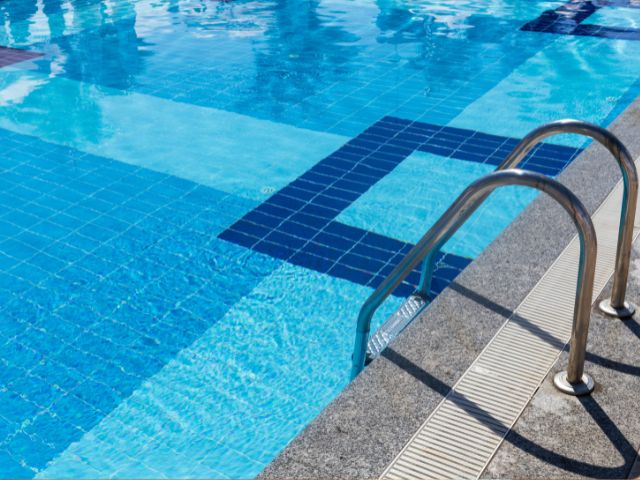What Is Calcium Buildup and How Can I Prevent It?

If you own a pool, you’ve probably heard of calcium buildup—also known as calcium deposits or scaling — or maybe you’ve even noticed it yourself: those stubborn, chalky white deposits forming along your pool walls, tiles, or equipment.
At Flow Pool Services, we believe that understanding calcium buildup and how to prevent it is key to protecting your pool’s beauty and longevity.
In this blog, we’ll explain exactly what calcium deposit or scaling is, why it happens, and the best ways to prevent and manage it.
What are Calcium Deposits?
Calcium deposits or scaling is the buildup of calcium carbonate on your pool surfaces.
It typically looks like:
- Rough, white or gray patches on the walls or floor
- Crusty, hard deposits along the waterline
- Scale buildup in pool heaters, filters, and plumbing
Not only does calcium buildup make your pool look unattractive, but over time, it can cause damage to your surfaces, equipment, and overall water quality.
What Causes Calcium Buildup?
Calcium buildup is primarily caused by high calcium hardness levels in the pool water combined with high pH or high-water temperatures.
Here are the main contributors:
High Calcium Hardness: If the water has too much dissolved calcium, it will eventually deposit it on surfaces.
High pH Levels: Water with a pH above 7.8 encourages scaling.
High Water Temperatures: Warm water evaporates faster, concentrating minerals and increasing the chance of scale formation.
Water Imbalance: Improper water chemistry accelerates the scaling process.
How Can You Prevent Calcium Buildup?
At Flow Pool Services, we recommend taking these proactive steps to keep your pool clean, clear, and scale-free:
1. Regular Water Testing and Balancing
Test your water weekly and maintain proper levels:
Calcium Hardness: 200–400 ppm is ideal.
pH: Keep between 7.2 and 7.6.
Total Alkalinity: Maintain 80–120 ppm.
If levels are off, adjust them immediately to avoid scale-friendly conditions.
2. Use a Sequestering Agent
Adding a calcium sequestrant to your pool water helps prevent calcium from settling onto surfaces by keeping it dissolved and suspended.
3. Lower the Water Temperature (When Possible)
During the hottest months, lowering your pool’s temperature even slightly can help reduce scaling, especially in heated pools.
4. Schedule Regular Pool Cleaning
Brush your pool walls, steps, and tile line at least once a week to remove any early signs of calcium buildup.
5. Professional Maintenance
Have a trusted pool professional (like Flow Pool Services!) perform regular inspections to catch and treat scaling before it becomes a bigger issue.
How We Can Help: Professional Calcium Scale Removal
Already seeing signs of calcium deposits?
Don’t worry — Flow Pool Services specializes in professional calcium scale removal, using safe and effective techniques to restore your pool’s surface without damaging it.
We also offer customized maintenance plans (with no contracts!) to keep your water chemistry perfectly balanced year-round, preventing future calcium buildup.


